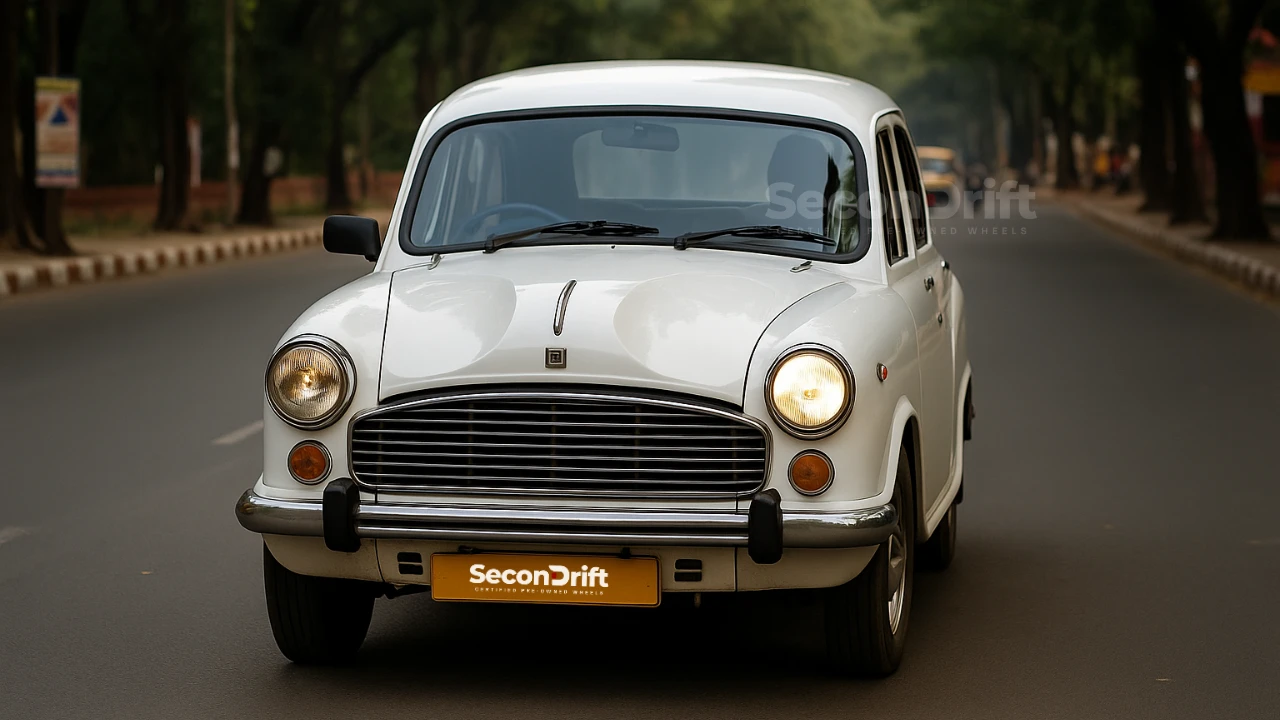For generations of Indians, the Ambassador car is more than just a vehicle — it is a symbol of a bygone era. Once hailed as the “King of Indian Roads,” the Ambassador was not just a mode of transport but a part of the cultural fabric of the country. From politicians and bureaucrats to taxi drivers and families, this bulky yet charming car served everyone faithfully for decades.
Ambassador – A British-Born Legacy in Indian Hands
The Ambassador traces its roots back to the Morris Oxford Series III, a British car manufactured by Morris Motors Limited in the 1950s. Hindustan Motors (HM), an Indian automotive manufacturer founded in 1942 by B.M. Birla, brought this model to India. In 1958, the Ambassador was born as a locally built version of the Oxford — marking the beginning of an illustrious legacy.
Built in Uttarpara, West Bengal, the Ambassador was among the first cars to be manufactured in India. With its curvy body, upright grille, and plush interiors, the car immediately made a mark. It was not only comfortable but also robust enough to handle India’s rugged roads, monsoon weather, and heavy-duty usage.
A Symbol of Power and Prestige
From the 1960s through the 1990s, owning an Ambassador was a mark of prestige. It became the default choice for government officials, politicians, and VIPs. The iconic white Ambassador with a red beacon on top became a powerful image associated with bureaucracy and governance in India.
The car’s design was utilitarian yet elegant. Its spacious interior, high ground clearance, and strong suspension made it ideal for both urban drives and rural adventures. Families loved it for long road trips, and its generous boot space made it practical for luggage-heavy travel.
Dominance Without Competition
During the pre-liberalization era, India’s automotive sector had limited options due to restricted imports and minimal domestic competition. This gave the Ambassador a near-monopoly on Indian roads. Other contenders like Premier Padmini and later the Maruti 800 would eventually challenge its dominance, but the Ambassador had already cemented its place in history.
For many, the Ambassador was their first car experience — whether as a passenger or a proud owner. Its heavy metal body gave it a sense of security that people trusted, and its presence on the road was unmistakable.
Challenges and Decline
With India opening up its economy in the 1990s, foreign carmakers began entering the market. Sleeker, fuel-efficient, and more technologically advanced vehicles flooded showrooms. The Ambassador, with its age-old design and lack of innovation, started to fade.
Despite efforts to revive its image with newer models like the Ambassador Nova and Ambassador Grand, the car could not keep up with the expectations of modern consumers. Hindustan Motors struggled financially and failed to modernize its manufacturing processes or design philosophy.
In 2014, after more than five decades of production, Hindustan Motors officially halted production of the Ambassador — marking the end of an era.
Cultural Significance and Nostalgia
Even today, the Ambassador holds a special place in the hearts of millions. It has been featured in countless Bollywood movies, vintage car rallies, and travel documentaries. The car represents a time when life was slower, choices were fewer, and every car on the road had a story to tell.
Collectors still maintain pristine versions of the Ambassador, and it’s not uncommon to see modified Ambassadors being used for weddings, tourism, and film shoots.
A Possible Comeback?
In a surprising turn of events, the French car manufacturer Peugeot (under Groupe PSA) acquired the Ambassador brand from Hindustan Motors in 2017 for around ₹80 crore. Since then, there have been rumors and speculations about a modern Ambassador making a comeback.
While no official launch has been announced, the idea of reviving the brand with a retro-modern design appeals to many nostalgic car enthusiasts. If reimagined well, the Ambassador could return — blending its classic charm with modern engineering.
Conclusion
The Ambassador may no longer rule Indian roads, but it will forever rule Indian hearts. It is not just a machine with wheels — it is a memory, a legacy, and a monument of India’s journey through time. From carrying prime ministers to being the family favorite on weekend road trips, the Ambassador played a vital role in shaping India’s automobile history.
As we move toward electric and autonomous cars, the image of the yellow or white Ambassador rolling down a wet street in the monsoon — its chrome gleaming under the streetlights — remains etched in our collective memory.
It’s not just a car. It’s India’s Ambassador to the world.
